How Community Involvement in Schools Will Help Students Prosper
Discover how community involvement in schools boosts student success, retention, and teacher optimism. Learn actionable strategies for effective engagement.











Schools play an integral role in every community. And since children eventually grow up to become members of those same communities, it stands to reason that communities should take an active role in ensuring schools deliver optimal learning environments to ensure happy, healthy, successful students.
While families and community partners often donate their time and resources to help schools thrive, the responsibility for driving community engagement lies with the schools and their school districts. In this short blog post, we explore the importance of encouraging community involvement in schools and provide tips on successfully doing just that.
Importance of community involvement in schools
Increasing access to community-based learning
Community-based initiatives can help students gain access to learning opportunities they would not have had otherwise. The Catapult Canada Access Innovation Fund (CCAIF) is a great example of this. It is a government-sponsored initiative that recognizes the importance of community involvement in schools. It provides funding to community-based organizations that focus on how young people learn, how they engage at school, and the tools they use to learn.
Northern Youth Abroad is one community-based organization receiving CCAIF funding to implement a pilot project that will connect over 20 Indigenous students from across the Northwest Territories, Nunavut, and the Yukon to learning opportunities and academic and other supports at Camosun College in British Columbia.
Boosting student retention
Promoting teacher optimism
Improving school attendance rates
Some groups of students are more likely to feel lower levels of belonging. Those who identify as LGBTQIA+, who have a disability, or who are from different cultural, language, or ethnic backgrounds than their peers often feel underrepresented and are less likely to do well than others, even when their previous academic achievement is the same.
Community involvement in schools can help with this. When students in minority groups see themselves represented in the wider community—and see the involvement of that community in their school—learning experiences and attendance rates are greatly improved.

How to promote community involvement in schools
- A teacher may not know what’s happening in a student’s life outside of class that may impact success and well-being
- A parent may not understand or agree with a teacher’s approach to delivering the curriculum
- A local business may not understand the importance of supporting its local school to ensure future employees have a well-rounded education
Involve both formal and informal community groups
A school’s community is made up of formal committee groups such as School Management Committees (SMC), Village Education Committees (VEC), School Development Committees (SDC), and Parent and Teachers Associations (PTA) as well as informal groups of community members who can get involved in the school through special activities or events.
Both sets of community groups bring important perspectives to the table—the formal groups bring perspectives informed by the inner workings of the school, and the informal groups bring perspectives from the wider community.
Create opportunities for inclusive education and decision-making
Community-inclusive processes like participatory decision-making (PDM) cultivate a broad range of perspectives to inform decision-making.
Encourage participation from all community groups in events and provide them with opportunities to contribute to decision-making by using unbiased engagement platforms. Diverse perspectives result in better decisions and help build social capital.
EXAMPLE
Elgin School District U-46 engaged its community to help shape a critical African American studies curriculumIllinois’ Elgin School District U-46 is committed to providing an inclusive environment for all students—especially those who have been historically marginalized and missed out on learning opportunities as a result.
When a group of African American students explained they didn’t feel represented by the school curriculum and requested a mandatory African American Studies course, the school nominated Dr. Teresa A. Lance, Assistant Superintendent of Equity and Innovation as the champion for inclusive, equitable education and she got to work, engaging the community for input into the new course.
Dr. Lance knew from experience that African American history was either missing or insufficiently covered in K-12 education and that representation matters as it relates to student outcomes and their sense of belonging.
She used AI-powered engagement to reach out to all students, gathering their ideas and perspectives, and received an incredible response from 1,321 participants, including almost 800 ideas and over 10,000 ratings to help inform the direction of the new course content.
Build community awareness campaigns
Community awareness campaigns help parents and community members understand the benefits of their involvement with their local schools. They also inform community members about the different levels and types of involvement opportunities, policies, and programs. If your community is bilingual or trilingual, translate the information to ensure inclusivity and boost representation across all groups.
UNESCO recommends that community members and school staff feel responsible for the success of community awareness campaigns. Arrange regular and open meetings about the school to share important information such as results, funds, and activities to keep people accountable for any goals set.
Use school community hubs
EXAMPLE
Palenque LSNA helped transform schools into hubs of community activity to help students prosperFounded in 1962, Palenque LSNA (formally known as the Logan Square Neighborhood Association) explored ways to improve economic conditions in the Logan Square neighborhood and realized the local public schools—comprised of 90% Latinx and 95% low-income students—played a key role in connecting and strengthening its community and vice versa.
In the early 1990s, the association formed an education committee to support schools and organized families, teachers, and principals around a campaign that—through the power of community involvement—opened five elementary school annexes and two new middle schools to relieve severe overcrowding in local schools.
The association also rallied its community to facilitate the creation of a parent mentor program that trains mothers, mainly immigrants, as paid classroom assistants while also providing leadership development training and a welcoming community. The parent mentor program has since spread to seven other schools, and more than 1,300 parents have graduated from the program.
Today, students benefit from community involvement in schools facilitated by Palenque LSNA initiatives like the youth leadership program, community learning centers, and more.
How will you engage your school’s community?
When we asked education leaders how the last two years have changed their approach to work, one central theme emerged: communication and relationship building with the community is critical.
Building strong relationships with community members, parents, and students is an education leader's most important job. So, what are you doing to build these relationships?
Giving communities a neutral platform to share their ideas and opinions is an excellent place to start. However, it can be difficult for schools to connect with the diversity of their community using traditional methods like town hall meetings, surveys, and focus groups. Fortunately, new online engagement platforms like ThoughtExchange have made it much more manageable.
An unbiased engagement platform provides community members with a safe and convenient way to share and learn from the diverse thoughts and ideas of others.

“If ThoughtExchange were a person, I would hug them. I used it in my previous district as a superintendent. What I love about ThoughtExchange is that there’s this opportunity for ideas to be put out anonymously, and then a coalescing around ideas—and that’s what I was looking for. I wasn’t looking for a Likert scale. I wasn’t looking to lead students by saying, here’s what should be included—do you agree or disagree?”
~Dr. Teresa A. Lance, Ed.D. Assistant Superintendent of Equity and Innovation Elgin Area School District 46



